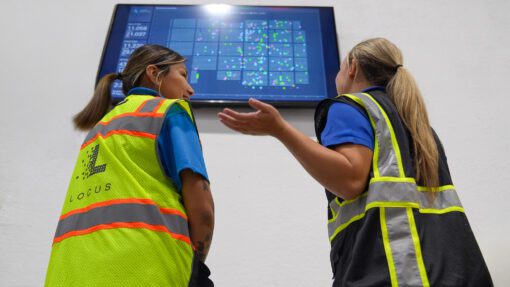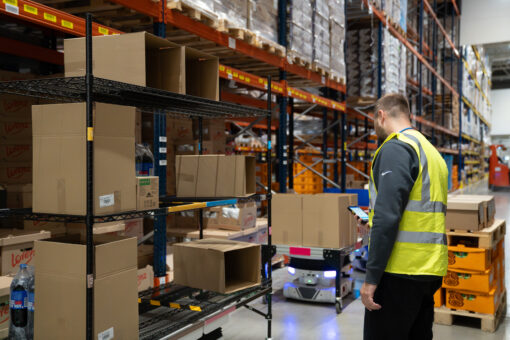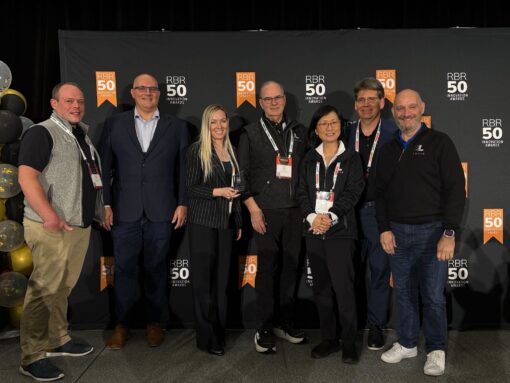WP: How to achieve 400 UPH with Locus Fast Pick
WP: How to achieve 400 UPH with Locus Fast Pick Download Now!
Robots-to-Goods (R2G) and Locus Array: The Next Era of Warehouse Automation
Rick Faulk, Chief Executive Officer
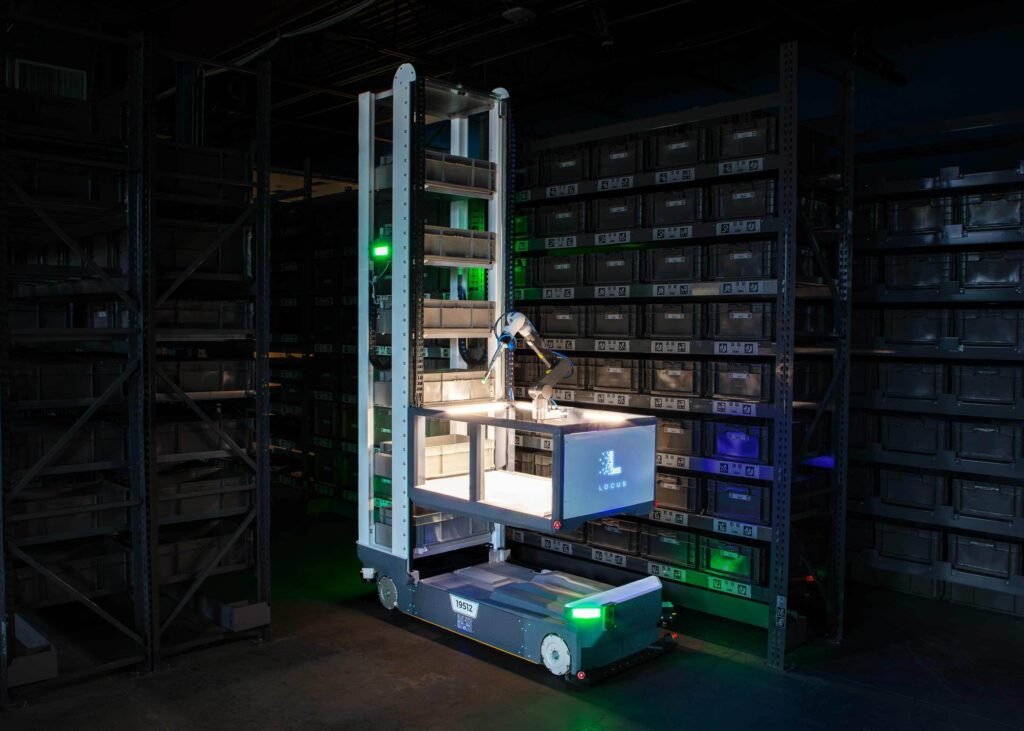
When we introduced Locus Array to select customers behind closed doors at ProMat, as I discussed in my last blog post, the excitement was undeniable. Warehouse leaders from our 3PL, retail, industrial, and healthcare accounts saw a new and innovative way to solve their most persistent challenges: labor, flexibility, and throughput!
Locus Array marks the launch of a new era in warehouse automation: Robots-to-Goods (R2G). Just as Person-to-Goods (P2G) and Goods-to-Person (G2P) defined earlier waves of innovation, R2G represents the next evolution. At the heart of this shift is Physical AI, the powerful combination of real-time perception, decision-making, continuous learning, and robotic manipulation in dynamic environments.
What are Customers Saying About Array?
We’ve spent the past few months previewing Array to customers and prospects, gathering their honest feedback, observing their reactions during live demos, and recording their challenges in their own words. I’ve personally participated in demos with over 70 customers, and the insights have been invaluable.
While I can’t share direct quotes, these six themes have been consistent:
- “This will be incredibly fast to deploy.” Customers are struck by how quickly Array can be up and running, typically in just weeks, compared to traditional AS/RS systems that require months or even years and come with significant operational disruption.
- “It never stops.” The 24/7 autonomous operation consistently impresses people who see the demo. They describe Array as a tireless co-worker who continues to induct, pick, and decant through the night, buffering orders so the morning shift can immediately begin packing.
- “Finally, a real answer to our labor issues.” With over 90% of manual touches eliminated from the picking process, customers value how Array enables them to reallocate labor to more value-added roles, directly addressing their ongoing staffing challenges.
- “It completes the whole order right in the aisle.” One of the most cited breakthroughs is Array’s ability to complete and stage full orders in-aisle, with zero human touches. This end-to-end automation dramatically reduces cycle times and increases fulfillment speed.
- “This changes how we think about space.” By enabling pick heights up to 10 feet, supporting narrower aisles and dual-sided picking, Array boosts density by 100%. Future support for subdivided source and destination totes will redefine space density and warehouse layout planning.
- “Inventory is not locked in anymore.” Unlike fixed AS/RS systems that limit inventory accessibility, customers value the fact that Array keeps inventory dynamic and immediately available.
One of our large customers summarized it best: “Array is the holy grail. It’s the breakthrough that brings us closer to the goal of fully automated, lights-out fulfillment.”
R2G: The Next Growth Category in Warehouse Automation
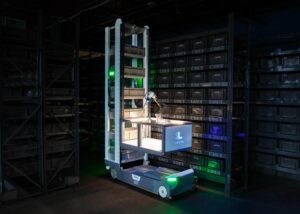 The idea behind Robots-to-Goods (R2G), as mentioned in this blog post, is a fundamental shift in how warehouse automation is architected.
The idea behind Robots-to-Goods (R2G), as mentioned in this blog post, is a fundamental shift in how warehouse automation is architected.
As Gina Chung, our Vice President of Corporate Development, put it during a recent discussion, R2G marks a clear evolution away from fixed infrastructure that brings goods to a person toward a dynamic environment where intelligent robots bring themselves to the goods, perform the pick, and move the order forward without human intervention. With Array, this isn’t theoretical. It’s being built, and Array is the blueprint.
Array is the foundational product for R2G because it brings together all the essential elements of this model:
- Zero-touch 24/7 operation.
- Autonomous navigation directly to product locations.
- In-aisle order consolidation and fulfillment without manual handling.
- AI-driven picking on both sides of an aisle.
- Continuous learning and optimization.
R2G increases density and accelerates throughput while giving operations leaders something they've lacked for too long: options. With Array and R2G, operators can scale without massive capital investment, optimize workflows without disrupting them, and fulfill customer expectations without burning out staff.
In short, R2G is the next era in warehouse automation.
The Intelligence & Engineering Behind Array
At the core of Array is a set of powerful capabilities:
- Automated, In-Aisle Picking: A custom-designed robotic arm mounted directly on Array picks orders directly from storage locations.
- AI Vision & Physical AI: Advanced models trained on real-world data allow Array to make intelligent decisions at speed, adapt to new SKUs, navigate unstructured environments, and continuously learn and improve over time.
- Collaborative Fulfillment with LocusONE™: When an item isn’t a fit for Array, it seamlessly hands off the task to Origin or Vector, creating a unified ecosystem that works as one.
Our CTO, Sean Johnson, says that we’re making solid progress with Array, both in system performance and customer validation. He added that it’s exciting to see a solution that began as a bold concept now approaching real-world deployment.
What’s Next: The Future of Fulfillment Begins Now
Nearly a decade ago, the concept of Array was born from a bold idea: to reimagine robotics not just for transport but for the far more complex challenge of fully autonomous picking. That idea is no longer just a vision; it’s becoming a reality.
Array is set to redefine the future of warehouse automation, establishing a new standard for what’s possible in intelligent, end-to-end fulfillment. Our R&D team is rapidly moving forward to launch our first pilot deployments.
And this is only the beginning.
About the Author
Rick leads the executive team with over 30 years of experience in executive management, sales, and marketing for some of the world’s most successful technology companies, such as Cisco, Intronis, j2 Global, WebEx, Intranets.com, Barracuda Networks, Lotus Development, Mzinga, and PictureTel. Rick leads the executive team and is responsible for the overall strategy and execution at Locus Robotics. Rick currently sits on various boards and is an advisor to multiple companies, including Retrocausal, Arccos, Cybernetix Ventures, and Leading Edge Ventures. Past board positions include Yodle, Virtual Computer, Bidding for Good, Skill Survey, Influitive, Ntirety, Blue Raven, and Centive.

